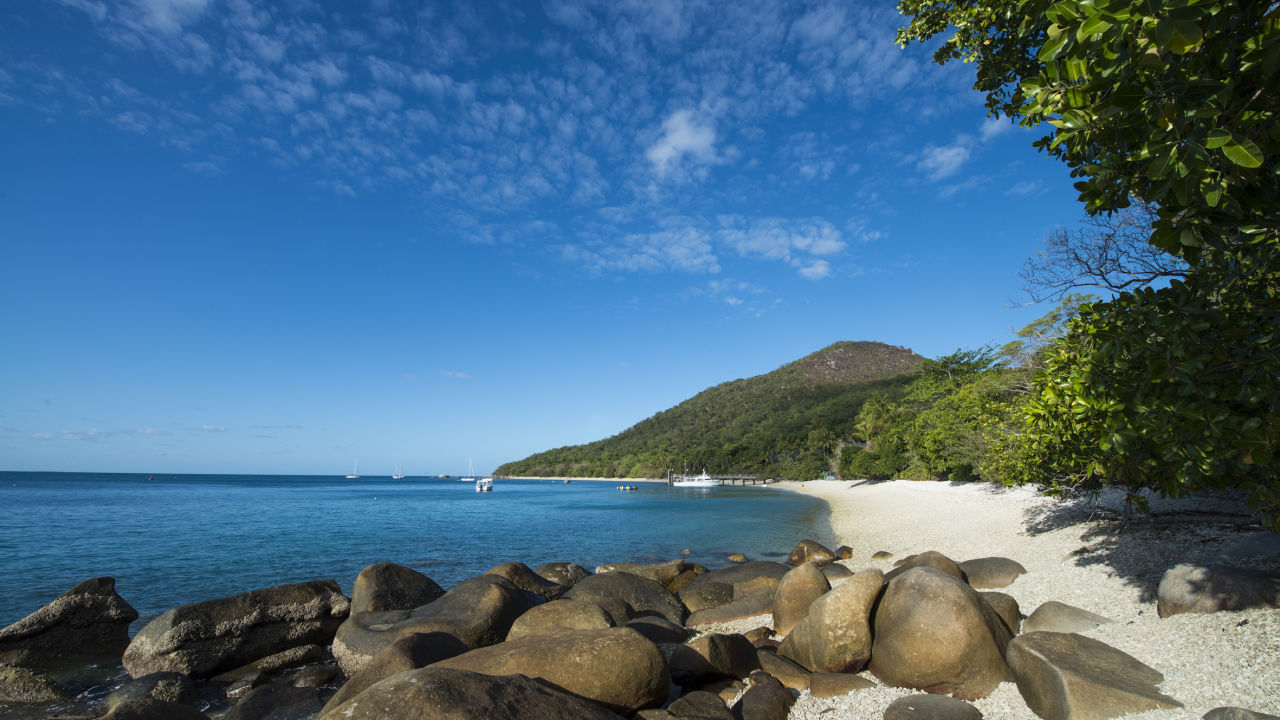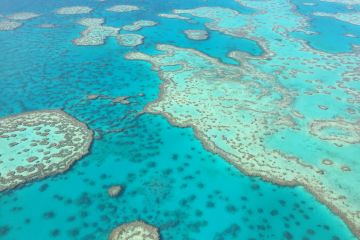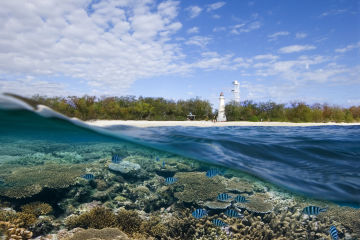Coastal development
As Queensland continues to grow, so does development along the coast and islands adjacent to the Great Barrier Reef Region.

#Land use
Agriculture
- Most land in the Great Barrier Reef catchment is used for grazing, crops, dairy and horticulture, with more than 80 per cent of the catchment supporting some form of agriculture.
- The most extensive land use is cattle grazing.
Mining
- Historically, extensive small-scale mining operations occurred through much of the Great Barrier Reef catchment.
- Production of saleable coal in Queensland has more than doubled since the early 1990s and the region is now associated with some of the world’s largest mines and coal ports.
- Curtis Island, located off the coast of the central Queensland city of Gladstone, is the site for the world’s first project converting coal seam gas to liquefied natural gas.
Urban and industrial development
- Urban and industrial development, excluding mining, in the Great Barrier Reef catchment is not extensive, however future economic projections suggest an increase in these types of land uses.
- Population growth in coastal areas is increasing the demand for infrastructure and services such as roads, water, sewerage and power.
- Although urban areas occupy only a small proportion of the catchment (less than 0.01 per cent), much of the development is located on floodplains and within the coastal zone.
Port development
- Port development has been the major reason for coastal reclamation — infilling areas of ocean, wetlands or other water bodies — along the Great Barrier Reef coast.
- The total area reclaimed within the World Heritage Area since its listing in 1981 is approximately eight square kilometres. Most of this was in the Gladstone region.
- Port development can also create artificial barriers to freshwater flow, such as bund walls and infrastructure in waterways.
Aquaculture
- Land-based aquaculture operations — mainly prawns, barramundi, redclaw and freshwater fishes — are located close to the coast in parts of the southern half of the catchment.
- Over the past decade there has been little expansion of land-based aquaculture adjacent to the Great Barrier Reef region, however overall production has increased.
- There are no marine-based aquaculture operations within the region at present.
Island development
- Some Great Barrier Reef islands support residential areas and tourism resorts.
- The principal residential islands are Palm Island and Magnetic Island.
- Tourism resort developments exist on 27 Great Barrier Reef islands. Most are in the Whitsundays, including Hamilton, Hayman, Lindeman, South Molle and Long islands.
- A major redevelopment of Great Keppel Island resort was approved in 2013.
#Impact
As Queensland continues to grow, so does development along the coast and islands adjacent to the Great Barrier Reef Region. Land in the Reef catchment area is used for agriculture, mining, urban and industrial development, port activities and island development. Reef health can be impacted not only by the legacy of past development actions — such as broad scale clearing for agriculture — but also by current and future actions, such as smaller scale clearing and reclamation for urban and industrial development.
#What we're doing

eReefs
The world’s largest reef forecasting and modelling program to track and predict the condition of the Reef, including water quality and bleaching.

Reef Islands
Restoring critical island habitats to protect ecosystems and save vulnerable species.

#Tomorrow needs you, now.
The Great Barrier Reef is in desperate need of support. Donate today to help grow new baby corals, creating a better future for the Reef.
